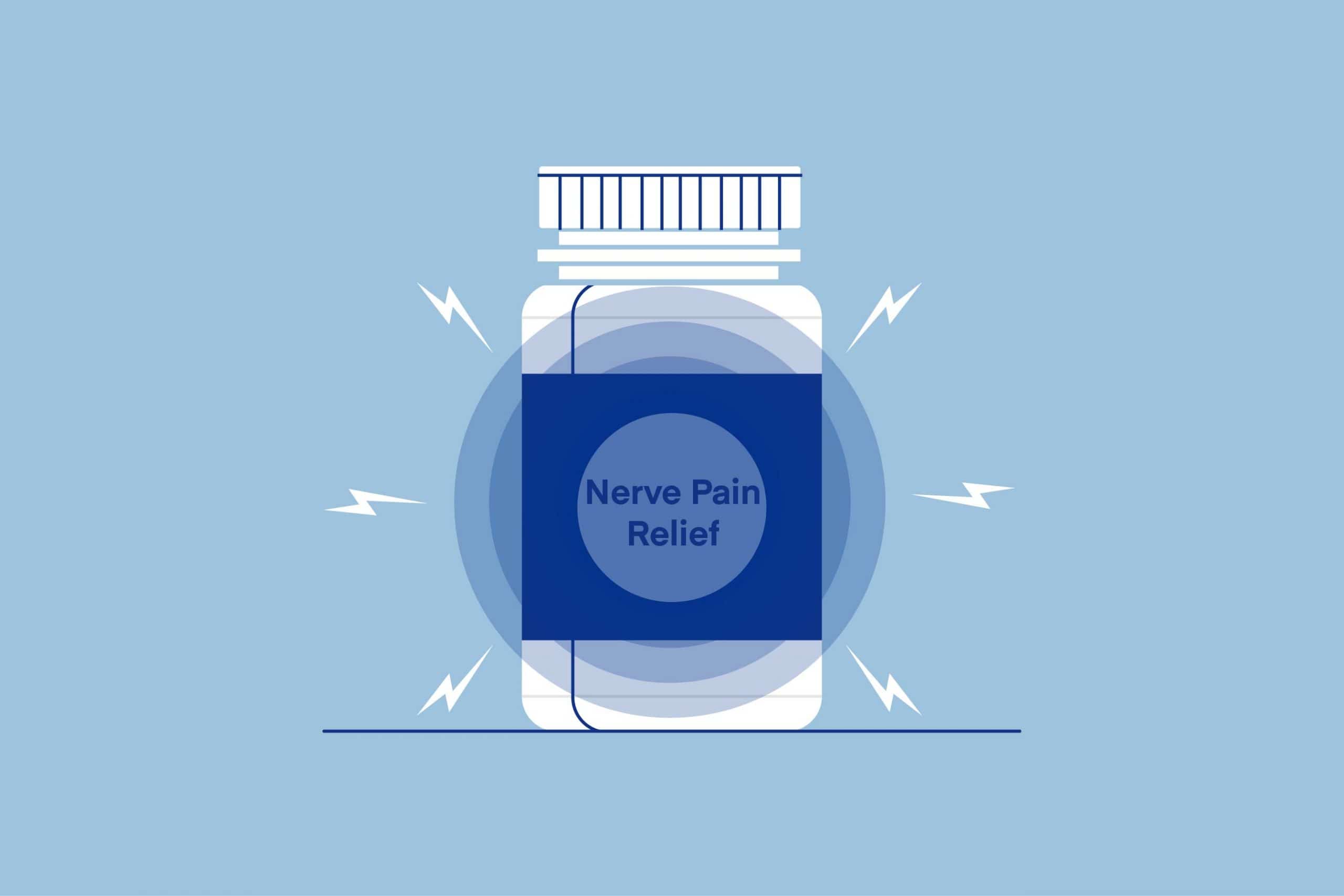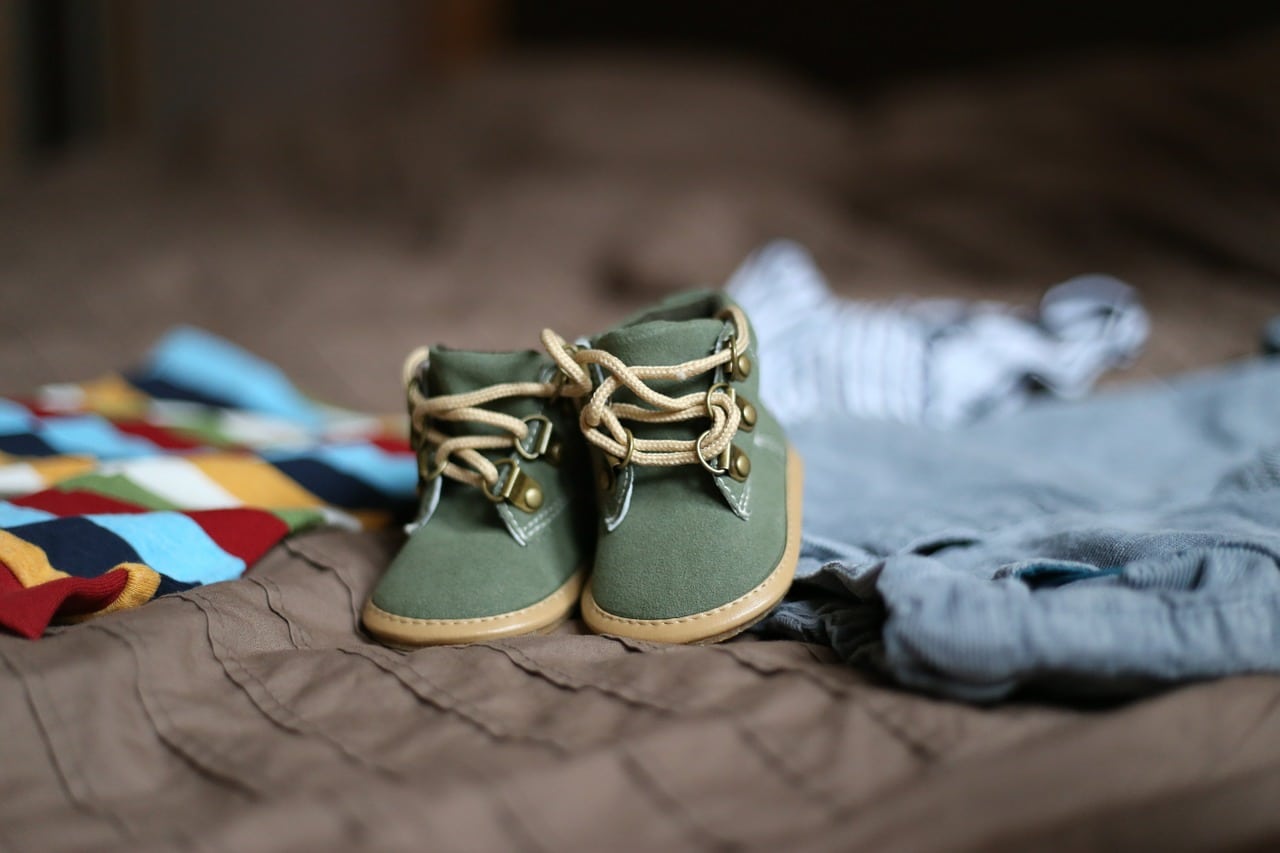Sciatica is a form of radiculopathy—a mild to severe pain caused by the compression or pinching of a spinal nerve root. Sciatica radiates pain down the legs and feet, away from the source, and is a sign of nerve irritation or inflammation. It causes an electric shock sensation and numbness in the legs and feet.
While “sciatica” is often used to describe a sharp pain in the lower back and legs, not all sciatic nerve pain is sciatica. While the symptoms are similar from case-to-case, minor details signal different causes, such as whether your pain begins in your back versus your legs. Knowing the root of the issue is vital to treating sciatic nerve pain, as certain diagnoses require different treatments.
We discuss the most common types of sciatic nerve pain and an overview of what sciatic nerve pain is, its potential causes and risk factors, and various treatment options to give you a stronger understanding of the issue.
Neurogenic
Neurogenic sciatica is when the sciatic nerve is compressed or pinched, leading to pressure along the spine. The symptoms generally include sharp, shooting pain down the legs and weakened legs and feet. While the issue is rooted in the spine, the pain is usually worse in your legs than in your back.
Along with physical pain, neurogenic sciatica causes abnormal neurological changes. Individuals may suffer from a loss of reflexes, sensory issues, muscle weakness, and paresthesia (“pins-and-needles”) due to improper nerve conduction.
Referred
Referred sciatica is not a true form of sciatica, but mirrors the pain and symptoms. Rather than being a spinal issue, referred sciatica is pain related to a muscle or joint problem. Referred pain is one of the main reasons why a diagnosis for sciatica is vital, as it may need further evaluation treatment beyond home remedies.
As opposed to shooting pains, people with referred sciatica may feel dull and achy and their pain may be worse in their back than in their legs. Referred pain also does not cause abnormal neurological changes, either, such as worsened reflexes, sensory issues, or tingling.
Alternating Sciatica
Sciatica typically only affects one leg as the sciatic nerve is only pinched on one side of the body. However, alternating sciatica affects both legs successively. It may be a result of degenerative issues in the sacroiliac joint, the joint connecting the spine to the hips, or sacroiliac arthritis.
Bilateral Sciatica
Bilateral sciatica is when both ends of the sciatic nerve are pinched. This results in pain and symptoms occurring in both legs and buttocks at once. It’s a rarer form of sciatica, and the pain in one leg can be worse than in the other. Bilateral sciatica may be the result of multiple herniated discs or disc degeneration.
Sources of Sciatic Pain
There are 33 individual bones in your spine known as vertebrae. Each vertebra is divided into regions and classified according to the number of vertebra per region. The vertebrae are then labeled by a number and letter based on their placement, such as C1 for the first vertebra in the cervical spine. There are five regions of the spine: cervical, thoracic, lumbar spine, sacrum, and coccyx.
The most common regions associated with sciatica are the lumbar spine and sacrum, and the source of your sciatic pain slightly alters your symptoms.
L4 Nerve Root
Irritation to the L4 nerve root causes pain to the hips, thighs, inner knees, calf, and foot. Thigh and hips muscles may feel weak, and calves numb. When sciatica is in the L4 level, a person may be unable to flex their foot or walk on their heels, and they may have a reduced knee-jerk reflex.
L5 Nerve Root
Individuals with sciatica from the L5 nerve root typically experience pain in the buttocks, outer, thigh, and leg, as well as difficulty flexing their ankle or lifting their big toe. Sciatica from the L5 level might also cause numbness, mainly on the top of the foot and between the big toe and second toe.
S1 Nerve Root
Sciatica from the S1 nerve root is also known as classic sciatica as it’s most commonly rooted in the sacrum. Sciatica from the S1 level specifically causes pain and weakness in the buttocks, back of the calf, and outside of the foot. Individuals with sciatica from the S1 level may have numbness or tingling in their third, fourth, and fifth toes, and have difficulty walking on their tiptoes or raising their heels off of the ground. Individuals may also find they have a weakened ankle-jerk reflex.
Duration of Sciatic Pain
Sciatica and sciatic pain are categorized based on how long the symptoms and pain have occurred. The duration of your pain may be a signifier for the necessary treatment options you need.
Acute Sciatica
Acute sciatica lasts between a few days to a few weeks. Typically, it does not require medical attention from a doctor, and home remedies are usually enough to treat the pain. However, acute sciatica can be severe during the brief period of time it is present.
Chronic Sciatica
Chronic sciatica is characterized by symptoms lasting longer than 12 weeks. It’s often less severe than acute pain, but it may not respond well to self-management nor does it pass on its own. Chronic sciatica may require surgical or non-surgical treatment to improve.
Common Causes of Sciatic Pain
Sciatic pain is a result of different conditions or diseases aggravating the sciatic nerve. Not all the conditions listed are guaranteed to cause sciatic pain, but sciatic pain is a frequent symptom.
Herniated or Bulging Discs
Herniated or bulging discs occur when the spongy discs between your spinal vertebrae are compressed and bulge out of place. They can occur at any age, but become more common as you grow older or if you have degenerative disc disease, a condition where the discs lose fluid and wear down. Herniated discs are most common in the lumbar spine and near the sciatic nerve, so they can cause sciatic pain.
Learn more about the best mattresses for herniated discs.
Bone Spurs
Bone spurs are small bone growths appearing near joints and are increasingly common with age. Bone spurs are the result of joint damage and linked to osteoarthritis, rheumatoid arthritis, and degenerative joint disease. After an injury or damage has occurred, your body attempts to heal the area by growing extra bone.
Typically, bone spurs cause no symptoms at all, though depending on where they’ve developed, a growth can compress your sciatic nerve and lead to pain.
Spinal Stenosis
The spinal canal is the spinal cord’s pathway down the back. With spinal stenosis, the spinal canal becomes narrower, placing pressure on the spinal cord. There are two types of spinal stenosis: lumbar and cervical stenosis. Cervical spinal stenosis affects the neck, while lumbar spinal stenosis affects the lower back and may cause sciatica.
Lumbar spinal stenosis can be the result of arthritis, spinal degeneration with age, tumors, or cysts.
See also our guide to the best mattresses for spinal stenosis.
Spondylolisthesis
Spondylolisthesis is a condition where one vertebra in the spine slips over the one below it, particularly in the lumbar spine region. The condition is typically a result of disc degeneration, arthritis, certain cancers, and certain surgeries.
Stress fractures are another common cause of spondylolisthesis, especially in young people and athletes, though they can happen to anybody. Repeated stress to the vertebra, injuries from motor vehicle accidents, or heavy lifting, can cause the vertebrae to fracture, leading to spondylolisthesis and sciatica.
Piriformis Syndrome
Piriformis syndrome is a neuromuscular disorder where the piriformis muscle (located where the femur and pelvis meet) compresses the sciatic nerve, resulting in spasms and pain in the buttocks and legs.
While the pain mimics sciatic pain, with tingling and numbness from the leg to the foot, it’s not sciatica since it’s not caused by spinal issues. Instead, it’s a referred pain beginning from the buttocks as opposed to the lower back.
Lymphedema
While lymphedema itself does not directly cause sciatica, it can contribute to the development or exacerbation of sciatic pain in some cases.
Lymphedema can cause significant swelling in the affected limb, which may put pressure on the surrounding nerves, including the sciatic nerve. This increased pressure can lead to irritation or compression of the nerve, resulting in sciatica-like symptoms.
Lymphedema in the lower extremities can also cause discomfort and heaviness, leading to changes in the way a person walks or stands. These alterations in gait and posture may place additional strain on the lower back, hips, and legs, potentially aggravating or contributing to sciatic pain.
See also Adjustable Beds and Lymphedema: The Benefits for Better Sleep
Risk Factors

Roughly 40 percent of people experience sciatica at some point in time, and while it’s most common for people 40 to 50 years old, it can happen at any age.
- Pre-existing spinal condition(s): Conditions such as degenerative disc disease or spinal stenosis, while they may not initially trigger sciatic pain, can eventually progress and cause sciatica.
- Diabetes: As a diabetic, your body becomes more vulnerable to nerve damage, increasing the possibility of sciatic nerve damage and sciatica.
- A sedentary lifestyle: Sitting for long periods of time, such as at work or school, can weaken your muscles and cause them to become stiff over time. A weak back and core puts pressure on your lumbar spine and leaves you at risk for sciatica.
- Heavy lifting: Heavy lifting such as at work, at the gym, or when gardening, can strain your back and lead to lower back issues, especially if you have improper form. When lifting heavy objects, carry the brunt of the weight with your legs as opposed to your back.
- Age: As you age, your spinal discs and tissues wear down, leaving you at risk for herniated discs. You also are more prone to physical health conditions, such as spinal stenosis or arthritis, resulting in sciatic pain.
- Weight: If you are overweight or obese, the extra weight in your midsection puts pressure and stress on your spine, leading to back strains and sciatica.
How to Treat Sciatic Pain
In some instances, simple home remedies are enough to ease and treat mild-to-moderate sciatic pain. However, if your sciatic pain is chronic or severe, receiving medical attention is the best step to take for proper treatment. Nearly all treatments—with a doctor or otherwise—are nonsurgical.
Massage Therapy
Massages improve blood circulation, relax muscles, reduce muscle tightness, and release endorphins, all of which are natural pain-relievers and can ease irritation. You can self-massage at home or visit a massage therapist for treatment.
Topical Treatments
A simple way to reduce this pain is to use topical treatments such as analgesic (pain-relief) ointments or hot and cold therapies. They provide temporary relief for localized pain and can be used throughout the day as needed.
For hot and cold therapies, use ice packs (wrapped in a towel to prevent ice burns), heat pads, or hot towels for twenty-minute intervals. Hot and cold ointments are another simple treatment and can be used on the go if needed.
Exercise
Physical activity can strengthen your back and core muscles and relieve pressure on your lower spine. Stretching and light aerobic exercises increase your body’s flexibility and potentially alleviate symptoms. However, avoid strenuous or heavy exercises and be sure your form is correct at all times so as not to worsen your pain.
Medications
While medications don’t directly treat sciatica, they can relieve pain temporarily and make daily activities easier. You can use over-the-counter (OTC) anti-inflammatory medications such as ibuprofen or aspirin, or your doctor might prescribe muscle relaxants, antidepressants, or higher doses of anti-inflammatory drugs. For more severe pain, your doctor may inject corticosteroids or epidural steroid injections in your lumbar spine to relieve inflammation for one to two months.
Chiropractic or Physical Therapy
Your doctor might refer you to a chiropractor or physical therapist for physical rehabilitation.
With a physical therapist, you learn techniques and exercises to strengthen your back and core, improve your posture, and how to avoid aggravating your sciatic nerve. Your physical therapist makes a home exercise routine for you to follow to reduce symptoms.
Chiropractors have an excellent understanding of the body’s musculoskeletal system and how to manipulate it to ease any pain. They complete different treatments to take the pressure off your sciatic nerve, including massage, hot and cold therapy, and spinal adjustments.
Surgery
It’s rare for sciatica patients to need surgery and is typically the final step if other nonsurgical treatment options have not shown improvement. If you have severe pain lasting beyond 6 to 12 weeks or you are debilitated by your pain, your doctor may suggest surgery.
The most common surgeries to treat sciatic pain are microdiscectomy, laminectomy, a spinal fusion, or disc replacement, and the surgery you are referred to is based on your diagnosis.
FAQs
When is sciatic pain a medical emergency?
Sciatic pain is rarely an emergency, but if your sciatic pain is paired with incontinence, fever, loss of appetite, worsening numbness and tingling, swollen legs or lower back, or it began after an accident, seek immediate medical care.
What causes sciatica to flare up?
Some potential triggers for sciatica flare-ups include:
- Stress and anxiety: Sciatica can be exacerbated by anxious thoughts as, when stressed, the brain deprives the nerves of needed oxygen and can result in weakness and tingling in the legs.
- Wallet sciatica: Wallet sciatica is a term used to describe sciatica aggravated by sitting on your wallet, keys, or cellphone. When an item is in your back pocket, it directly presses up against the sciatica nerve and causes a flare-up.
- High heels: When wearing high heels, your center of gravity shifts and stretches your hamstring and sciatic nerve. Walking on your toes, as you do in heels, might also irritate your sciatica.
- Poor posture: Having poor posture when sitting or standing puts stress on your lower back and spine, resulting in a flare-up.
- Tight clothing: Some clothing may be just tight enough to press against your sciatic nerve and trigger your sciatica pain.
Why is sciatica so painful at night?
Sciatica pain can be aggravated when lying down, making it difficult to sleep and find a comfortable position. In some instances, sciatic pain can be severe to the point of waking you up at night. Adjusting your sleep position, as well as using a supportive mattress, can ease your pain.
Side sleeping may place pressure directly onto the nerve roots and tilt your hips out of alignment with your spine. It’s best to lay on your unaffected side and use a pillow between your knees to keep your spine aligned and prevent pain.
Lying on your back emphasizes the lumbar spine’s curve, potentially pinching the sciatic nerve’s roots and causing pain. Elevate your legs using a pillow under your knees or an adjustable base to reduce the pressure and relieve your symptoms.
Stomach sleeping can overextend your lower back and irritate your sciatica, so it’s best to try a different sleeping position. However, if it’s too difficult to switch positions, temporarily use a pillow under your hips to protect your back.
Can sciatica be caused by a bad mattress?
While it’s unlikely a bad mattress is the cause of your sciatica, your mattress can definitely worsen pain if it’s unsupportive. Older mattresses tend to be rather unsupportive and lumpy, but even new mattresses can aggravate your sciatica if they’re not suited for your sleeping position.
It’s best to use a high-quality mattress built for your sleeping position and body weight to keep your spine aligned and minimize your pain as much as possible.
Should I push through sciatic pain?
If you’re experiencing any sciatic pain while exercising or completing any daily activities, don’t ignore it. Instead, take a few minutes to rest and allow your pain to pass. However, if your sciatic pain makes it difficult to complete daily activities as normal, speak with your doctor for treatment options.
Conclusion
If you’re experiencing sciatic nerve pain, it’s best to get diagnosed and figure out what type of sciatic pain it truly is, as it can be a sign of a larger underlying condition. Although what you’re experiencing may feel like sciatica, it can be caused by an unrelated issue such as piriformis syndrome. In order to protect your body and prevent worsening the issue, always get a doctor’s opinion if you are unsure. In fact, Dr. Nayantara Santhi notes, “Pain can lead to poor sleep and as a result affect your quality of life. In fact, sleep and pain have a bi-directional relationship. So improving sleep hygiene can help with the pain and likewise managing pain can help with sleep.”
About the author
April Mayer is a sleep expert and writer with a degree in exercise physiology. She has dedicated her career to exploring the relationship between sleep and productivity. Her insightful articles, such as "The Surprising Way Your Mood Might Be Messing With Your Productivity" and "Wake Up to More Productive Mornings," have been featured in reputable publications like Forbes, Greatist, Real Homes, Thrillist, Tom's Guide, and Eat This, Not That. With a passion for helping others lead more productive lives through restful sleep, April offers valuable expertise on foods and vitamins for better sleep. As a trusted member of the Early Bird team since March 2020, she continues to provide informative and well-researched content.
View all posts





